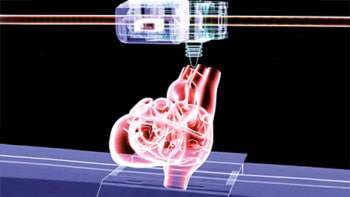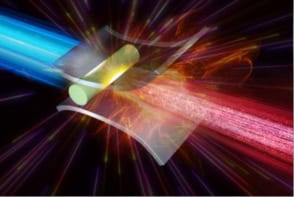How do you monitor a lion’s breathing rate or take a tiger’s pulse? With great difficulty, one would imagine.
A team at the University of South Australia has now developed a way to perform these routine health checks using a high-resolution digital camera. The new approach will save the animals the stress of an anaesthetic – and presumably will greatly lower the stress of the zookeepers too.
The researchers filmed animals at Adelaide Zoo – including a giant panda, African lion, Sumatran tiger, orangutan, koala, red kangaroo and a little blue penguin – from up to 40 m away. By detecting tiny movements in the chest cavity, they could record the animals’ heart and breathing signals without needing any physical contact or disrupting the animals’ daily routine. You can hear engineer Javaan Chahl discuss the pilot study in the video above.
On this Valentine’s day, while some may be planning celebrations, spare a thought for the broken hearted. But help may be at hand – at least in a bioengineering sense. Heart disease has a huge impact on patients’ quality-of-life and researchers are continuously looking to develop new treatments, such as cardiac patches, for example, which can help restore damaged heart tissue following a heart attack. Bioengineers from Trinity College Dublin have now fabricated a conductive cardiac patch that can endure the strains and stresses exhibited by human cardiac muscle tissue as the heart beats.
The researchers used melt electrospinning writing to make a patch that can withstand repeated stretching and showed good elasticity. They fine‐tuned the patch geometry to reflect the directionally‐dependent mechanics of the heart, and coated the patches with an electroconductive polymer to provide conductive properties close to those of human myocardium. The team says that this work “essentially takes us one step closer to a functional design that could mend a broken heart”.
Finally, today sees the announcement of the winners of the 12th annual Dance Your PhD contest. This year’s overall winner is neuroscientist Antoine Groneberg. Her zebrafish larvae-inspired video, Early life social experiences shape social avoidance kinematics in larval zebrafish, “merged dance and science for an aesthetically stunning and intellectually profound masterwork of art,” according to judge Alexa Meade.
The judges also highlighted the winner of the physics category for special recognition, for its “original rap and professional production”. The “hilarious and yet scientifically informative” video, Utilizing multispectral lidar in the detection of declined trees, is a dance about multispectral scanning of forests, created by Samuli Junttila.



